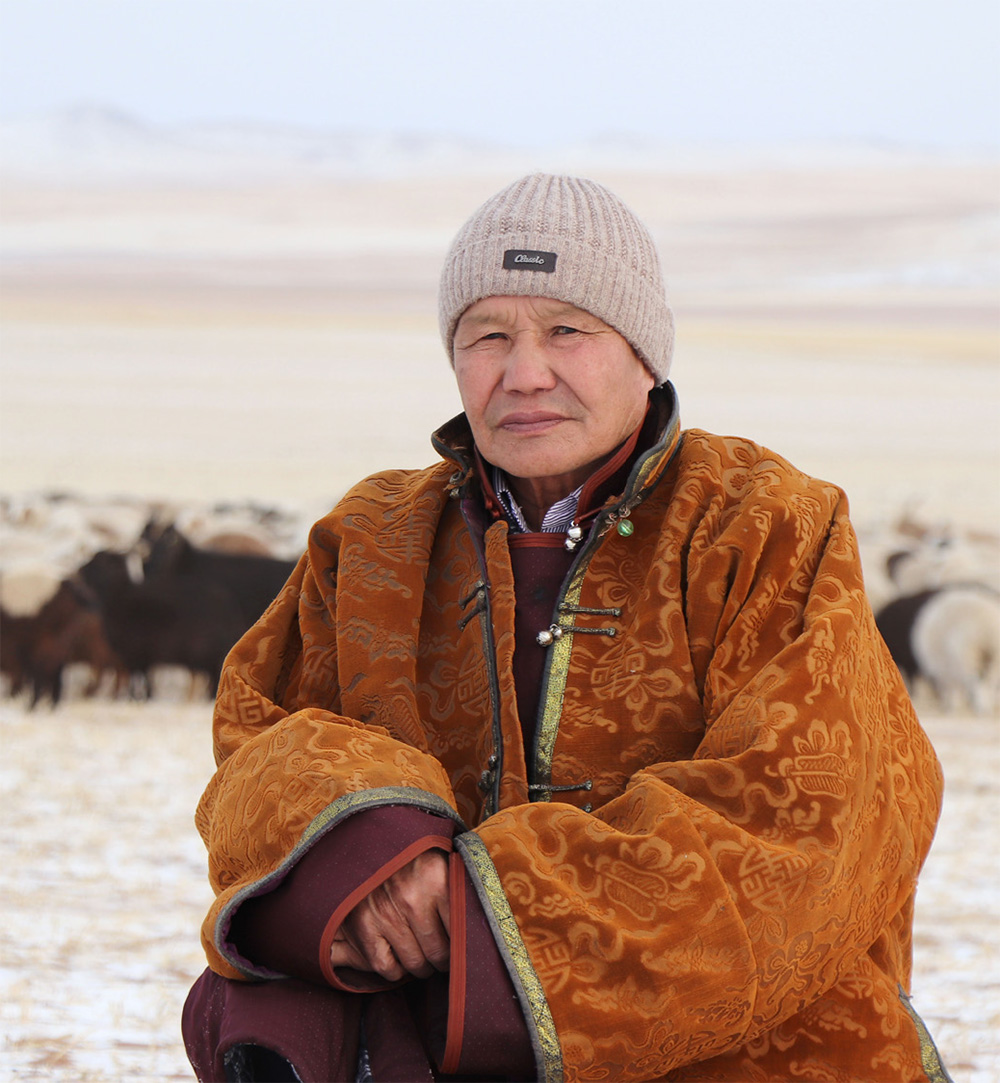Master of a Thousand Skills
On the eve of the last day of the lunar month, as Mongolians bustled about preparing for Tsagaan Sar (the White Moon Festival), I found myself heading home, preoccupied with one persistent thought: “Who are the Mongolian herders of the 21st century?” The question puzzled me, teasing out both presumptions and truths.
Some might say these herders are nomads clinging to ancient traditions, while others might dismiss them as outcasts, left behind by Mongolia’s modern society and free-market economy. Still, others blame them for overusing natural resources and damaging the grasslands. Yet, defenders insist herders are the backbone of Mongolian society and culture.
These thoughts swirled in my mind until I suddenly arrived at the home of D. Gombo-Ochir, a herder from the 4th bag of Erdenesant soum in Tuv Province /Central Province/. A man well into his years but spry and sharp, he struck me as a storyteller, a philosopher, and a living example of the modern Mongolian herder.
For Gombo-Ochir, the privatization of the mid-1990s was a turning point. It allowed him, a man who had discreetly bred cattle during the socialist regime, to pursue his passion: animal herding. Unlike the stereotypes of the time that pegged herding as a profession for the uneducated, he saw it as an intricate craft—a science, even.
When it came to passing down this legacy, he made a deliberate choice. Of his six children, he selected the one most skilled in mathematics to take up herding. For him, herding required not just a deep connection with nature but also intelligence and adaptability. His son, G. Enkhtur, validated this decision when he was named Mongolia’s Best Herder in 2004, at just 24 years old.
Watching Enkhtur work was like watching a maestro. Starting with 2,000 heads of livestock in spring, he’d effortlessly manage to increase the count to 3,000 by summer. It was no mystery; his success stemmed from the profound system his father had taught him.
Gombo-Ochir speaks of herding with reverence, referring to it as “king knowledge” and describing herders as “masters of a thousand skills.” To him, herding is more than a livelihood—it is a multifaceted discipline. A herder must be a meteorologist to predict weather, a botanist to select pastures, a zootechnician to feed livestock, an economist to sell animal products, and a food technologist to prepare dairy.
Herders even memorize the physical traits of hundreds of sheep and can locate their horses with the accuracy of a GPS—without having seen them for days. For Gombo-Ochir, these skills epitomize what he calls “a fine science.” His life philosophy is simple yet profound: “A person capable of sustaining a credible life achieves more than someone with a diploma.”
Living Closest to Nature
As we talked, I realized that Mongolian herders are among the world’s few who live so closely with nature. Their wisdom, gained from the land, makes them truly exceptional. Gombo-Ochir likened the intelligence of the Mongolian people under the vast steppes and open sky to airag fermenting—rich and unique.
He was pragmatic, though, about the challenges of herding. While many dream of optimizing animal husbandry for higher productivity, he emphasized the resilience of Mongolian livestock. Small in stature, these animals thrive in Mongolia’s harsh weather and rugged landscapes. He had tried crossbreeding with foreign sires but found that the best breeds were those adapted to local conditions.
A Call to the Countryside
In October 2017, two young professionals made an unusual decision. A. Tengis, a political science graduate, and Kh. Bilguun, an international studies major, left behind urban careers to become herders under Gombo-Ochir’s mentorship.
This move was part of a broader initiative led by Gombo-Ochir to address urban overpopulation and rural unemployment. He envisioned creating 10,000 jobs in the countryside, reducing pollution in Ulaanbaatar, and revitalizing the nomadic way of life.
Despite initial interest, few applied. Many urban families, displaced by drought and dzud, were hesitant to return to rural life, fearing unemployment and financial insecurity. Undeterred, Gombo-Ochir personally visited families, urging them to consider herding.
A New Generation of Herders
Under Gombo-Ochir’s guidance, Tengis and Bilguun flourished. Though they started with no experience—even struggling to distinguish sheep from goats—they quickly learned. During the brutal winter of 2017-2018, while many herders lost livestock, they welcomed over 800 lambs without a single loss.
When their contracts ended in 2018, the two young men decided not to return to Ulaanbaatar. Instead, they ventured deeper into rural Mongolia to try herding cattle and camels.
Meanwhile, Gombo-Ochir now lives in a comfortable house in the soum center, enjoying time with his family. His son Enkhtur continues the herding tradition, moving livestock across pastures based on the seasons. His ger is modest, but it houses modern tools like a TV, mobile phone, and internet, embodying a blend of tradition and technology.
The Answer for “Who are the Mongolian herders of the 21st century?”
As I left the Buushint winter camp, the sight of thousands of sheep, like scattered white ankle bones, lingered in my mind. The question, “Who are the Mongolian herders of the 21st century?” finally had an answer.
They are the keepers of a rich nomadic heritage, navigating the challenges of a free-market economy with resilience and ingenuity. For them, herding is more than a livelihood—it is a way of life, an art, and a legacy. They stand at a crossroads, carrying the weight of tradition into an uncertain future, embodying the spirit of Mongolia’s vast, untamed land.
Writer; Davaadorj grew up as a nomad before moving to the city to pursue journalism and writing.

